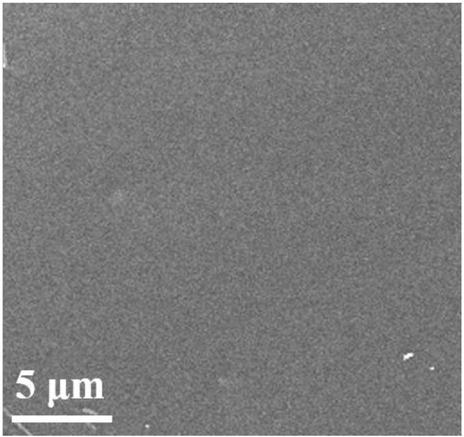Preparation method of biological coating with strong binding force on surface of carbon/carbon composite material
A carbon composite material and bio-coating technology, applied in coating, tissue regeneration, medical science, etc., can solve the problems of not having the function of conducting or inducing bone tissue regeneration, difficult materials to effectively combine with bone, and not having biological activity , to achieve the effect of improving cohesion, enhancing compactness, and increasing interface bonding force
- Summary
- Abstract
- Description
- Claims
- Application Information
AI Technical Summary
Problems solved by technology
Method used
Image
Examples
Embodiment 1
[0030] (1) Wrap the carbon fibers on the surface of the carbon / carbon composite material along the same direction, and the distance between the carbon fibers is 0.5 mm to obtain sample A;
[0031] (2) Wrap the carbon fibers on the surface of the sample A again along the direction perpendicular to the first step, and the distance between the carbon fibers is 0.5mm to obtain the sample B;
[0032] (3) The hydroxyapatite nanoribbon is uniformly dispersed in absolute ethanol according to a concentration of 1 g / L to obtain a solution C;
[0033] (4) Titrate solution C on the surface of sample B, the titration is 1ml / cm 2 , get sample D;
[0034] (5) Evenly mix the phenolic resin powder and absolute ethanol according to 20% by mass percentage to obtain solution E;
[0035] (6) The hydroxyapatite nanoribbon is uniformly dispersed in the solution E according to 1g / L to obtain the solution F;
[0036] (7) Soak sample D in solution F for 36 hours to obtain sample G;
[0037] (8) Tit...
Embodiment 2
[0041] (1) Wrap the carbon fibers on the surface of the carbon / carbon composite material along the same direction, and the distance between the carbon fibers is 2.0 mm to obtain sample A;
[0042] (2) Wrap the carbon fibers on the surface of the sample A again along the direction perpendicular to the first step, the distance between the carbon fibers is 2.0mm, to obtain the sample B;
[0043](3) The hydroxyapatite nanobelt is uniformly dispersed in absolute ethanol according to the concentration of 10g / L to obtain solution C;
[0044] (4) titrate solution C on the surface of sample B, the titration is 5ml / cm 2 , get sample D;
[0045] (5) Evenly mix the phenolic resin powder and absolute ethanol at 50% by mass to obtain solution E;
[0046] (6) The hydroxyapatite nanobelt is uniformly dispersed in the solution E according to 5g / L to obtain the solution F;
[0047] (7) Soak sample D in solution F for 72 hours to obtain sample G;
[0048] (8) Titrate solution F on the surfac...
Embodiment 3
[0052] (1) Wrap the carbon fibers on the surface of the carbon / carbon composite material along the same direction, and the distance between the carbon fibers is 1.0 mm to obtain sample A;
[0053] (2) Wrap the carbon fibers on the surface of the sample A again along the direction perpendicular to the first step, the distance between the carbon fibers is 1.0mm, to obtain the sample B;
[0054] (3) The hydroxyapatite nanobelt is uniformly dispersed in absolute ethanol according to the concentration of 5g / L to obtain solution C;
[0055] (4) Titrate solution C on the surface of sample B, the titration is 3ml / cm 2 , get sample D;
[0056] (5) Evenly mix the phenolic resin powder and absolute ethanol according to 30% by mass percentage to obtain solution E;
[0057] (6) The hydroxyapatite nanobelt is uniformly dispersed in the solution E according to 3g / L to obtain the solution F;
[0058] (7) Soak sample D in solution F for 48 hours to obtain sample G;
[0059] (8) Titrate sol...
PUM
 Login to View More
Login to View More Abstract
Description
Claims
Application Information
 Login to View More
Login to View More - R&D
- Intellectual Property
- Life Sciences
- Materials
- Tech Scout
- Unparalleled Data Quality
- Higher Quality Content
- 60% Fewer Hallucinations
Browse by: Latest US Patents, China's latest patents, Technical Efficacy Thesaurus, Application Domain, Technology Topic, Popular Technical Reports.
© 2025 PatSnap. All rights reserved.Legal|Privacy policy|Modern Slavery Act Transparency Statement|Sitemap|About US| Contact US: help@patsnap.com

